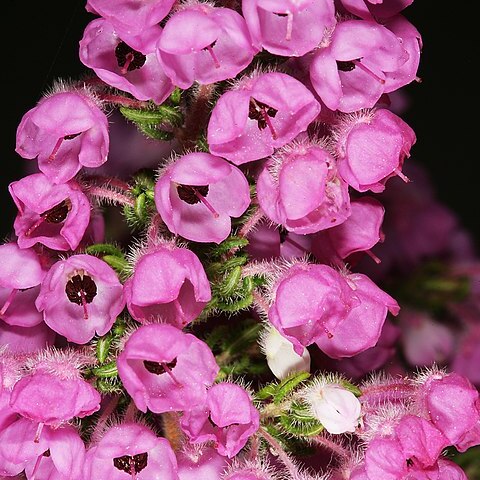Erect shrub, 0.3-1.0 m high. Leaves 3-nate, 3-5 mm long, erect to spreading, crowded, linear-lanceolate, incurved, sulcate or ± open-backed, hispid tubercle-based hairs. Flowers 3-nate, terminal, coralline, many on short branchlets forming a pseudoraceme. Sepals 1.5-2.5 mm long, 4-cleft, cyathiform, white-villous; lobes deltoid, acute, length variable, equal to half tube length. Corolla 3.5-5.0 mm long, broadly cyathiform, dry, glabrous, rosy; lobes ± as long as tube, erect, suborbicular, apex strongly nerved. Anthers included, 1.0-1.5 mm long, lateral, oblong, obtuse, brown, muticous; pore ± 1/2 length of theca. Ovary turbinate, silky-villous; style exserted, slender, dilated and obconic at apex; stigma subsimple. Flowering time Oct.-May, mainly spring.
Erect shrublet to 60 cm. Flowers small/medium, open cup-shaped, pink.

